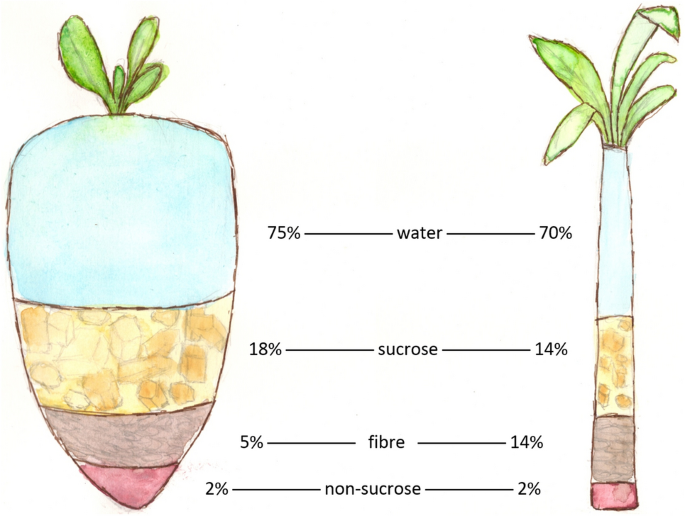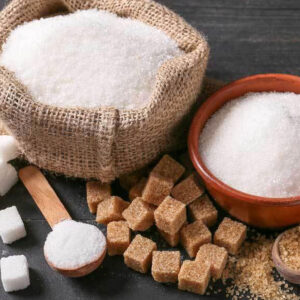A key factor in the beet sugar vs cane sugar debate is how each type impacts cooking.
A key factor in the beet sugar vs cane sugar debate is how each type impacts cooking.
Blog Article
Discover the Uses and Perks of Beet Sugar Vs Cane Sugar in Your Daily Diet
Discovering the distinctive high qualities of beet and cane sugar discloses more than just their sweetening abilities; it highlights their distinct impacts on health and wellness and cooking arts. Beet sugar, recognized for its refined flavor, is typically favored in fragile treats, whereas cane sugar, with its hint of molasses, includes richness to robust dishes. Each type holds its own dietary account and glycemic effects, welcoming a much deeper understanding of their duties in a balanced diet and lasting consumption methods.
Beginning and Manufacturing Procedures of Beet and Cane Sugar

The distinctive environments and soil types required for expanding sugar beets and sugarcane contribute to differences in their growing methods and geographical circulation, influencing the economics and sustainability of their manufacturing. beet sugar vs cane sugar.
Nutritional Contrast Between Beet Sugar and Cane Sugar
Despite originating from different plants, beet sugar and cane sugar are nutritionally really similar, both primarily including sucrose. Each provides regarding 4 calories per gram, translating to about 16 calories per teaspoon. Structurally, both sugars are composed of around 99.95% sucrose, with very little amounts of various other compounds like dampness and trace element, which do not substantially modify their dietary profiles.

Ultimately, when choosing in between beet sugar and cane sugar based on dietary web content alone, both offer identical benefits and drawbacks as they are basically forms of the exact same particle-- sucrose, providing fast power without various other nutrients.
Effect On Health And Wellness: Glycemic Index and Caloric Content
Exploring better right into the results of beet sugar and cane sugar on health and wellness, it click this is essential to consider their glycemic index and calorie material. The glycemic index (GI) of both beet and cane sugar is around 65, categorizing them as high-GI foods, which can trigger fast spikes in blood glucose degrees.
Each kind of sugar consists of around 4 calories per gram, making their caloric material equivalent. For those monitoring calorie intake, particularly when handling weight or metabolic health and wellness conditions, comprehending this equivalence is important (beet sugar vs cane sugar). Nevertheless, excessive intake of any type of high-calorie, high-GI food can add to health and wellness problems such as weight problems, heart condition, and insulin resistance.
Environmental and Economic Factors To Consider of Sugar Manufacturing
Beyond health impacts, the manufacturing of beet and cane sugar additionally raises significant ecological and financial concerns. Sugar beet farming has a tendency to require cooler environments and has a reduced geographical footprint contrasted to sugar cane, which thrives in exotic regions. Nonetheless, both crops are intensive in regards to water usage and land occupation, possibly causing deforestation and water deficiency. Economically, the international sugar market is highly volatile, affected by adjustments in international profession plans and subsidies. Several nations incentivize sugar manufacturing with economic assistance, skewing market value and influencing small-scale farmers adversely.
In addition, the usage of pesticides and plant foods in both beet and cane sugar farming can result in soil destruction and pollution, more affecting biodiversity and neighborhood water bodies (beet sugar vs cane sugar). The selection in between growing sugar beet or cane frequently depends upon regional environmental problems and economic variables, making the sustainability of sugar manufacturing a complex problem
Culinary Applications and Taste Distinctions
While the environmental and financial elements of sugar production are indeed considerable, the option in between beet and cane sugar additionally influences culinary applications and taste accounts. Beet sugar, acquired from the sugar beet plant, is understood for its extremely neutral preference. This makes original site it a flexible ingredient in cooking, where it does not modify the flavor of various other elements. It dissolves swiftly and is ideal for use in cakes, cookies, and pastries.
Walking stick sugar, removed from sugarcane, typically preserves molasses traces, which pass on a distinct richness and deepness. This slight molasses flavor enhances the intricacy of baked products, sauces, and marinades. It is especially preferred in things where a caramel touch is desired, such as in brownies or gingerbread. The small variant in moisture content between beet and cane sugar can impact the texture and uniformity of meals, making cane sugar a preferred option for details recipes that profit from its one-of-a-kind properties. other

Conclusion
Finally, both beet and cane sugar have distinctive beginnings and manufacturing processes, using similar dietary accounts with mild differences in salt material and flavor. While their effect on health, especially regarding glycemic index and calories, is similar, the choice between them typically boils down to ecological, financial factors, and specific culinary requirements. Recognizing these aspects can lead customers in making informed decisions that line up with their health and wellness goals and taste preferences.
Report this page